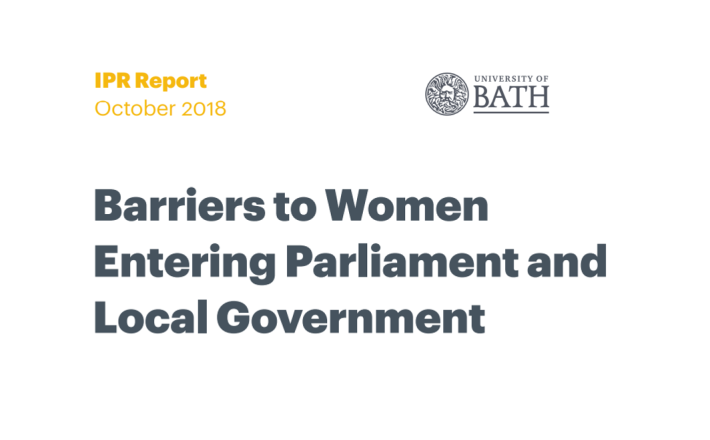Barriers to Women Entering Parliament and Local Government in the United Kingdom
Source: University of Bath
In January 2018, the Government Equalities Office (GEO) commissioned this rapid evidence review, the two broad aims of which were to identify: a) barriers to women’s participation in local and national government; and b) evidence of policies and practices, sometimes referred to as Positive Action Mechanisms, which have increased their levels of participation.
An established way of examining the barriers that women face to widening their political representation is to explore supply and demand issues. For the purposes of this review, supply and demand barriers have been collapsed into a typology comprising three overall themes: social and cultural barriers; structural and institutional barriers; and knowledge and information barriers.
Much of the literature and research suggests that gender quotas are the most effective method for increasing numbers of women and quantitative analysis has pointed to their broader impact for political engagement as they encourage more women to stand for election, and incentivise political parties to target women’s votes. However, although quotas increase the number of women elected, the evidence points to the fact that they do not necessarily ensure the success of women once elected, as quotas do not tackle the gendered practices of political institutions. The literature emphasises the need for quotas to be accompanied by a broader array of measures.
Click here to read the report.

In January 2018, the Government Equalities Office (GEO) commissioned this rapid evidence review, the two broad aims of which were to identify: a) barriers to women’s participation in local and national government; and b) evidence of policies and practices, sometimes referred to as Positive Action Mechanisms, which have increased their levels of participation.
An established way of examining the barriers that women face to widening their political representation is to explore supply and demand issues. For the purposes of this review, supply and demand barriers have been collapsed into a typology comprising three overall themes: social and cultural barriers; structural and institutional barriers; and knowledge and information barriers.
Much of the literature and research suggests that gender quotas are the most effective method for increasing numbers of women and quantitative analysis has pointed to their broader impact for political engagement as they encourage more women to stand for election, and incentivise political parties to target women’s votes. However, although quotas increase the number of women elected, the evidence points to the fact that they do not necessarily ensure the success of women once elected, as quotas do not tackle the gendered practices of political institutions. The literature emphasises the need for quotas to be accompanied by a broader array of measures.
Click here to read the report.